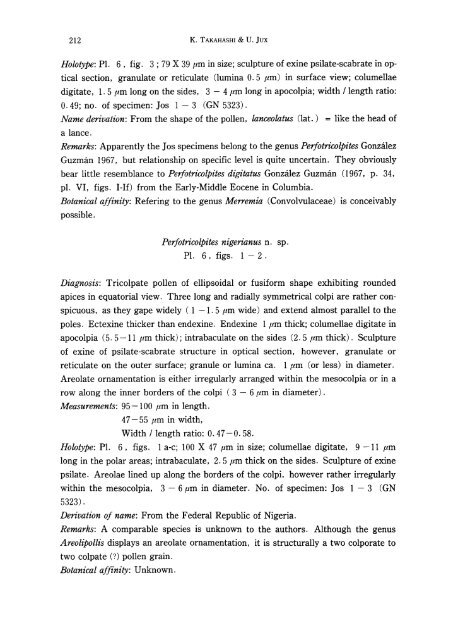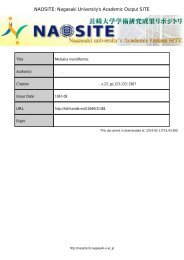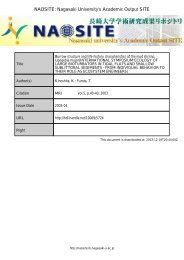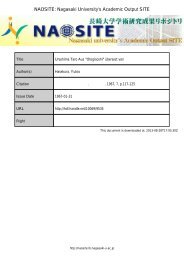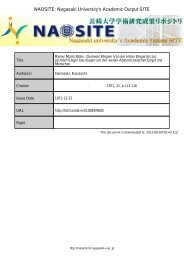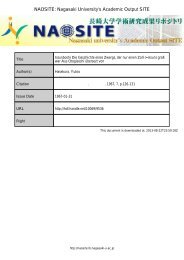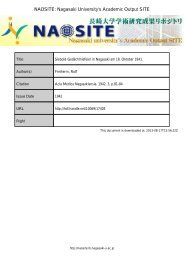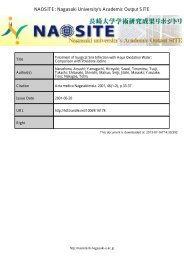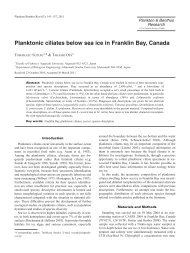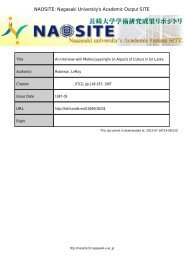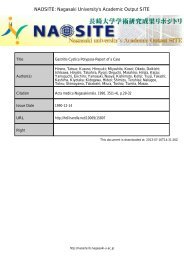Palynology of Middle Tertiary lacustrine deposits
Palynology of Middle Tertiary lacustrine deposits
Palynology of Middle Tertiary lacustrine deposits
Create successful ePaper yourself
Turn your PDF publications into a flip-book with our unique Google optimized e-Paper software.
212 K. TAKAHASHI & U. jux<br />
Holotype: PI. 6, fig. 3; 79 X 39 pm in size; sculpture <strong>of</strong> exine psilate-scabrate in optical<br />
section, granulate or reticulate (lumina 0.5 ,urn) in surface view; columellae<br />
digitate, 1. 5 pm long on the sides,<br />
3 - 4 pm long in apocolpia; width / length ratio:<br />
0.49; no. <strong>of</strong> specimen: los I - 3 (GN 5323).<br />
Name derivation: From the shape <strong>of</strong> the pollen, lanceolatus (lat.)<br />
= like the head <strong>of</strong><br />
a lance.<br />
Remarks: Apparently the los specimens belong to the genus Perfotricolpites Gonzalez<br />
Guzman 1967, but relationship on specific level is quite uncertain. They obviously<br />
bear little resemblance to Perfotricolpites digitatus Gonzalez Guzman (1967, p. 34,<br />
pI. VI, figs. I-If) from the Early-<strong>Middle</strong> Eocene in Columbia.<br />
Botanical affinity: Refering to the genus Merremia (Convolvulaceae) is conceivably<br />
possible.<br />
Perfotricolpites nigerianus n. sp.<br />
PI. 6, figs. I - 2 .<br />
Diagnosis: Tricolpate pollen <strong>of</strong> ellipsoidal or fusiform shape exhibiting rounded<br />
apices in equatorial view. Three long and radially symmetrical colpi are rather conspicuous,<br />
as they gape widely ( 1 -1. 5 pm wide) and extend almost parallel to the<br />
poles. Ectexine thicker than endexine. Endexine 1 pm thick; columellae digitate in<br />
apocolpia (5.5-11 ,urn thick); intrabaculate on the sides (2.5 pm thick). Sculpture<br />
<strong>of</strong> exine <strong>of</strong> psilate-scabrate structure in optical section, however, granulate or<br />
reticulate on the outer surface; granule or lumina ca. l,um (or less) in diameter.<br />
Areolate ornamentation is either irregularly arranged within the mesocolpia or in a<br />
row along the inner borders <strong>of</strong> the colpi (3 - 6 pm in diameter) .<br />
Measurements: 95-100 pm in length.<br />
47-55 pm in width,<br />
Width / length ratio: 0.47-0.58.<br />
Holotype: PI. 6, figs. I a-c; 100 X 47 pm in size; columellae digitate, 9 -11 pm<br />
long in the polar areas; intrabaculate, 2.5 pm thick on the sides. Sculpture <strong>of</strong> exine<br />
psilate. Areolae lined up along the borders <strong>of</strong> the colpi, however rather irregularly<br />
within the mesocolpia, 3 - 6 pm in diameter. No. <strong>of</strong> specimen: los 1 - 3 (GN<br />
5323) .<br />
Derivation <strong>of</strong> name: From the Federal Republic <strong>of</strong> Nigeria.<br />
Remarks: A comparable species is unknown to the authors. Although the genus<br />
Areolipollis displays an areolate ornamentation, it is structurally a two colporate to<br />
two colpate (?) pollen grain.<br />
Botanical affinity: Unknown.


